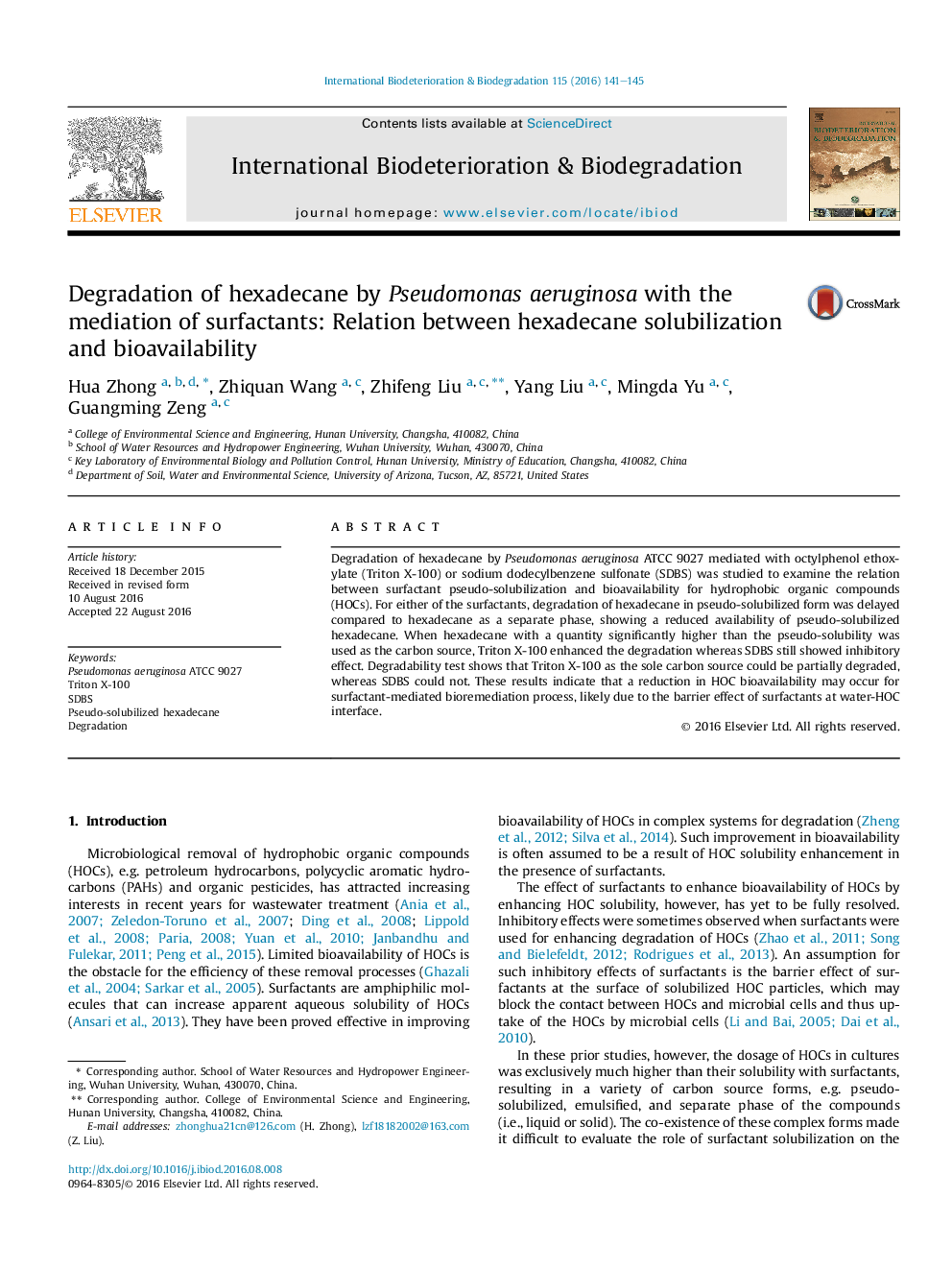| Article ID | Journal | Published Year | Pages | File Type |
|---|---|---|---|---|
| 4364169 | International Biodeterioration & Biodegradation | 2016 | 5 Pages |
•Pseudo-solubilization by surfactants reduces hexadecane bioavailability.•Triton X-100 is degradable and enhances hexadecane degradation in complex system.•Blocking effect of surfactants accounts for reduction in hexadecane bioavailability.
Degradation of hexadecane by Pseudomonas aeruginosa ATCC 9027 mediated with octylphenol ethoxylate (Triton X-100) or sodium dodecylbenzene sulfonate (SDBS) was studied to examine the relation between surfactant pseudo-solubilization and bioavailability for hydrophobic organic compounds (HOCs). For either of the surfactants, degradation of hexadecane in pseudo-solubilized form was delayed compared to hexadecane as a separate phase, showing a reduced availability of pseudo-solubilized hexadecane. When hexadecane with a quantity significantly higher than the pseudo-solubility was used as the carbon source, Triton X-100 enhanced the degradation whereas SDBS still showed inhibitory effect. Degradability test shows that Triton X-100 as the sole carbon source could be partially degraded, whereas SDBS could not. These results indicate that a reduction in HOC bioavailability may occur for surfactant-mediated bioremediation process, likely due to the barrier effect of surfactants at water-HOC interface.
Graphical abstractPseudo-solubilization by surfactants reduces hexadecane bioavailability due to the blocking effect of surfactant.Figure optionsDownload full-size imageDownload as PowerPoint slide
